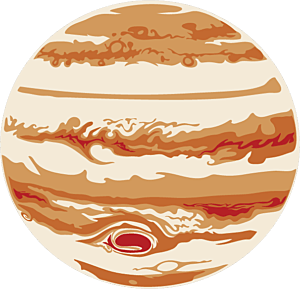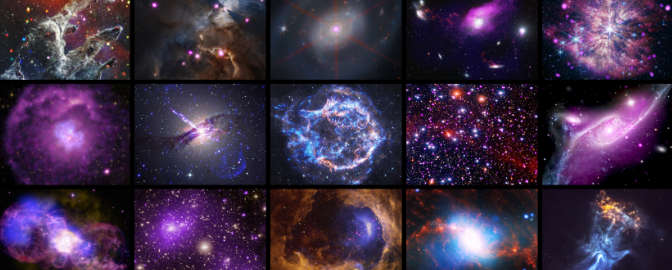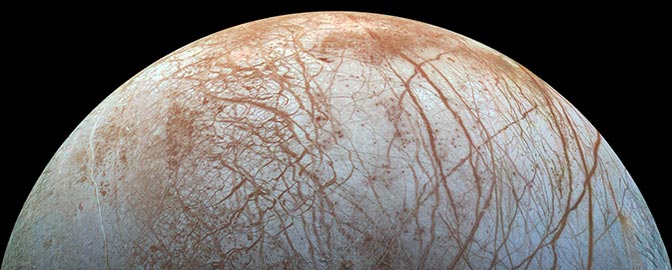The Downlink • Feb 07, 2025
Kiss kiss kaboom!
Space Snapshot

This image from ESA's ExoMars Trace Gas Orbiter shows the debris kicked up when a meteorite smashed into Mars in February 2021. Recent research suggests that NASA’s InSight lander, which was about 1,600 kilometers (about 1,020 miles) away at the time, picked up the seismic waves caused by that impact. Image credit: ESA.
Fact Worth Sharing

NASA’s Perseverance rover was the first spacecraft to use a microphone to record sound on Mars. Other spacecraft captured sound earlier, but only indirectly. NASA's InSight lander, for example, used its seismic sensors to capture vibrations from the wind, which researchers translated into sound.
Mission Briefings


The Moon’s “Grand Canyons” may have formed within minutes. Near the lunar farside’s Schrödinger impact basin (pictured) are two enormous canyons, Vallis Schrödinger and Vallis Planck, which are as deep as Earth’s Grand Canyon. New research suggests that the asteroid or comet impact that created the basin likely formed both canyons in less than ten minutes. Image credit: NASA/Lunar Reconnaissance Orbiter.

Grooves on Uranus’ moon Ariel could tell us about its interior. Ariel is home to its own massive canyons, which are traversed by grooves containing deposits of carbon dioxide ice and other carbon-bearing molecules. A new study suggests that these grooves might be spreading centers that bring material from the moon’s interior to the surface. If so, studying these regions may yield insights into Ariel’s interior.

NASA science groups have paused work due to executive orders from U.S. President Trump. Several NASA analysis and assessment groups that provide input to the agency’s astrophysics and planetary science divisions have been ordered to pause their operations until NASA headquarters can determine whether the groups’ activities comply with the Trump Administration’s new executive orders.

NASA continues to seek a partner for its VIPER Moon mission. The agency had to eliminate the budget for its VIPER (Volatiles Investigating Polar Exploration Rover) mission despite the rover being fully built and tested, but it is not giving up hope on the mission altogether. NASA is seeking proposals from the private sector for a partner that would land and operate the rover, which is designed to search for ice on the lunar surface and collect science data.

ESA’s galaxy-mapping Gaia space telescope has discovered an exoplanet. The telescope detected wobbles in the motion of a star 244 light-years away, suggesting that it is orbited by a “Super-Jupiter” exoplanet. This is the first exoplanet to have been discovered by Gaia data alone.
From The Planetary Society


Pluto and Charon might have formed with a kiss. Recent research suggests that the dwarf planet and its largest moon may have formed through a “kiss-and-capture” process that differs from most other moon formations. Adeene Denton from the University of Arizona joins this week’s Planetary Radio to discuss her team’s research on the unusual origins of these two worlds. Pictured: Charon, imaged by NASA’s New Horizons spacecraft. Image credit: NASA/Johns Hopkins University Applied Physics Laboratory/Southwest Research Institute/Alex Parker.

How will we talk to ET if we can't talk to other intelligent species in our own world? The latest Planetary Society virtual book club meeting explored this topic in a conversation with Denise Herzing, the author of “Is Anyone Listening? What Animals are Saying to Each Other and to Us.” Dr. Herzing has been studying dolphin communication in the wild for 40 years, a topic that has led her to consider how we might someday strike up a conversation with beings from another world. Book club meetings are exclusive to Planetary Society members, but anyone can watch the recording of the event.

Up next in the book club: an astronaut’s perspective. Our February book club pick is “Orbital” by Samantha Harvey, which follows the experiences of a fictional crew aboard the International Space Station. Book club members will get a peek into the real experience of life in space in a live virtual Q&A with astronaut Nicole Stott, who spent a total of 104 days in space as a crew member on both the International Space Station and the Space Shuttle. Live book club meetings are exclusive to Planetary Society members.

The Day of Action is the best way you can speak up for space. Will you join us? The Day of Action brings advocates from across the United States to Washington, D.C., to meet with their representatives in Congress and take direct action to support planetary exploration, planetary defense, and the search for life. This year’s Day of Action takes place on March 24. Early bird registration ends Feb. 14, so sign up today!
What's Up

The planet parade continues this week, with super bright Venus, yellowish Saturn, very bright Jupiter, and reddish, very bright Mars spanning the evening sky from west to east. If you’ve got binoculars you might see Uranus as well, and a telescope could get you Neptune. Find out more in our guide to February’s night skies.
Wow of the Week

Long before planets, moons, asteroids, and comets form, planetary systems may look something like this. In this mesmerizing infrared view from JWST, you can see HH 30, a newborn star, surrounded by a protoplanetary disk. You can see material blowing off the disk in bluish cone shapes above and below it, with thin jets of plasma rushing past them. All of these processes play a role in the formation of new planetary bodies. Image credit: ESA / Webb, NASA & CSA, Tazaki et al.
Send us your artwork!
We love to feature space artwork in the Downlink. If you create any kind of space-related art, we invite you to send it to us by replying to any Downlink email or writing to [email protected]. Please let us know in your email if you’re a Planetary Society member!


 Explore Worlds
Explore Worlds Find Life
Find Life Defend Earth
Defend Earth

